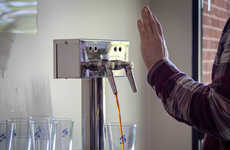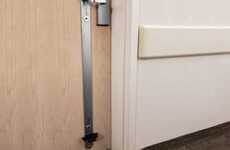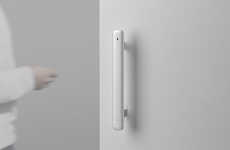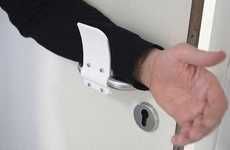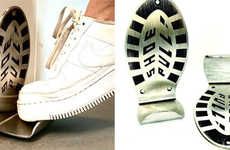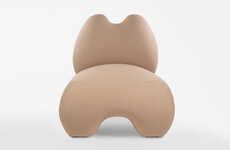
The Kinetic Touchless 2.0 System is Intuitive to Use
Michael Hemsworth — March 24, 2021 — Art & Design
Automatic doors aren't new but are known for being sensitive to even the slightest movement that will accidentally activate them, so the Kinetic Touchless 2.0 system has been designed as a more efficient alternative.
Created by Singapore-based Stuck Design, the door makes use of a gesture control functionality that will have the person use their hands to slide it open without ever making contact. This is positioned as a more refined method of the aforementioned automatic door and will slide closed once the user is no longer controlling it.
The Kinetic Touchless 2.0 system utilizes advanced sensor technology to automatically detect the user's hand when within a certain proximity to prevent it from being accidentally activated at any point.
Image Credit: Stuck Design
Created by Singapore-based Stuck Design, the door makes use of a gesture control functionality that will have the person use their hands to slide it open without ever making contact. This is positioned as a more refined method of the aforementioned automatic door and will slide closed once the user is no longer controlling it.
The Kinetic Touchless 2.0 system utilizes advanced sensor technology to automatically detect the user's hand when within a certain proximity to prevent it from being accidentally activated at any point.
Image Credit: Stuck Design
Trend Themes
1. Touch-free Gesture-controlled Systems - Opportunity for businesses to design and implement touch-free gesture-controlled systems for doors, elevators and other high traffic areas.
2. Advanced Sensor Technology - Development of advanced sensor technology could enable businesses to create more refined automatic systems that are less prone to accidental triggering.
3. Intuitive Human-machine Interfaces - Opportunity for businesses to innovate and make human-machine interfaces more intuitive and responsive to user needs.
Industry Implications
1. Architecture and Design - Architects and designers can apply touch-less, gesture-controlled technology in building and public spaces.
2. Hospitality - In the hospitality industry, touch-less systems can help provide a worry-free and germ-free experience for guests and staff.
3. Healthcare - In healthcare, touch-less systems can help reduce the spread of germs and infections, particularly in high-traffic areas such as hospitals and clinics.
3.8
Score
Popularity
Activity
Freshness



